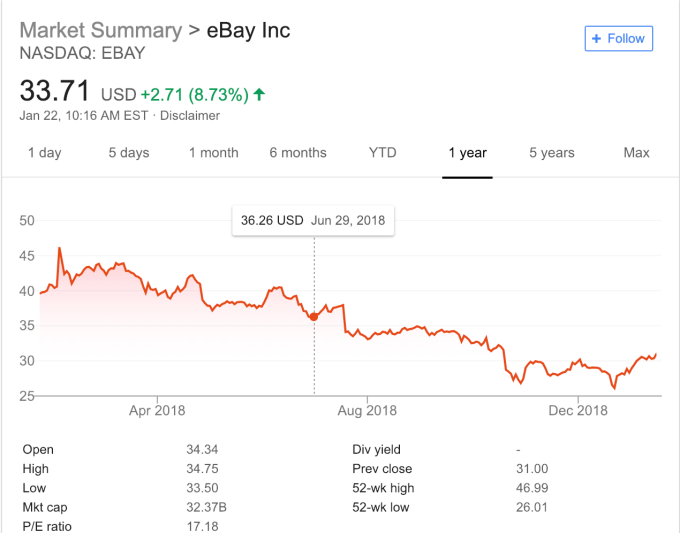When it comes to reaching would-be customers today, one of the biggest investments that brands and retailers will make is in advertising, to the tune of nearly $630 billion globally. Now, a startup called Dosh, which offers cash back on purchases, is announcing that it has raised $40 million to take on the advertising industry, with the pitch that its app provides a more targeted and guaranteed way of getting consumers to bite.
The funding — $20 million in equity and $20 million in venture debt — is led by Goodwater Capital and Western Technology Investment. Previous investors PayPal, BAM Capital and Anthem Venture Partners also participated. Sources close to the company confirm that the funding was done on approximately a $300 million valuation. It’s raised $96 million in total, including both equity and debt.
“Instead of taking all in equity we decided to split because of the strength of the company at the moment,” said Ryan Wuerch, Dosh’s founder and CEO, in an interview, who said the funding would be used for hiring, business development and technology investment. “We want to be opportunistic.”
It was only nine months ago that Dosh last raised dosh, $44 million on a $241 million valuation. In the interim, the startup has been on a roll — at one point, in the holiday spending period, hitting number-one among US shopping apps and clocking in some $50 million in cash back to its users, doubling those returns since last April. It now has 3 million card-linked subscribers and more than 150,000 retailers and brands signed up to its platform.
Up to now, Dosh’s business model has been to forge deals with retailers and brands — partners include Nike, Toms, Gap, Walgreens, Walmart, Target, Jack In The Box, and more — and payment card providers like Visa and MasterCard. When a user links up a card, and she or he buys something from the retailers and brands that have connected with Dosh, the user gets money back. That money can in turn be paid into your bank account, your PayPal account, towards further purchases, or to charity. Dosh itself makes money by taking a cut on each transaction, although it does not provide details of its percentage.
Going forward, the idea will be to continue to expand its business along the same lines by building more technology into the platform to make the offers you are getting more targeted to what you might be most likely to buy, and to use the same tech to increase rewards to entice you to buy things that you may be less likely to naturally buy.
The company’s viewpoint is that a direct cash reward is a much stronger driver for retail intent than advertising can ever be, and because of how Dosh links up with card providers, it’s much easier to see how an offer is linked to an actual purchase.
“When you think about advertising over the years, at first all you had was radio and TV and print with little attribution,” Wuerch said. “Now digital gives you clicks and impressions, but true attribution is when you get to the consummation of the purchase, which is what we are able to show. The tech that we built and continue to build enables us to understand consumers.”
Given the billions that are spent on advertising today, even moving the needle a little to get more retailers working with Dosh on more deals could prove very lucrative to the company… and its investors.
“Dosh’s mission is to put billions of dollars of wasted advertising spend directly into consumers’ pockets,” said Chi-Hua Chien, co-founder and managing partner at Goodwater Capital leading its investment in Dosh. “They are the clear leader in the rapidly growing card-linked offers market and we are confident this latest round of funding will accelerate their achievement of that mission.” (And to be clear there are many others in the same space of offering cash back on purchases, such as Drop and Ebates.)
Offers are specific to people on the platform. Wuerch explained it, he and I might both get offers for Sam’s Club cash back, but because he visited the store three days ago and is a very regular visitor, whereas I never go there, we may have very different cashback offers on the table.
Loyalty programs have become a strong driver for how people purchase goods and services. Amazon Prime is perhaps the strongest example of how that is being played out in e-commerce: to keep people using Amazon, under one umbrella, Amazon is offering users free and fast shipping on a range of items, plus access to services that ordinary customers will not get, all for a single monthly fee.
Dosh is taking a very different approach, in that it has “no plans” said Wuerch to ever move into e-commerce, instead focusing specifically on physical retail experiences.
“Our goal is to drive consumers into stores, and we have found that the cash stimulus really does create a change in consumer behavior,” he said.
Today, Dosh is only in the US, and Wuerch said that international expansion is likely to come in 2020. Whether that will come by way of organic growth or acquisition remains to be seen. In the UK, for example, Quidco provides a similar cash back experience to users.


